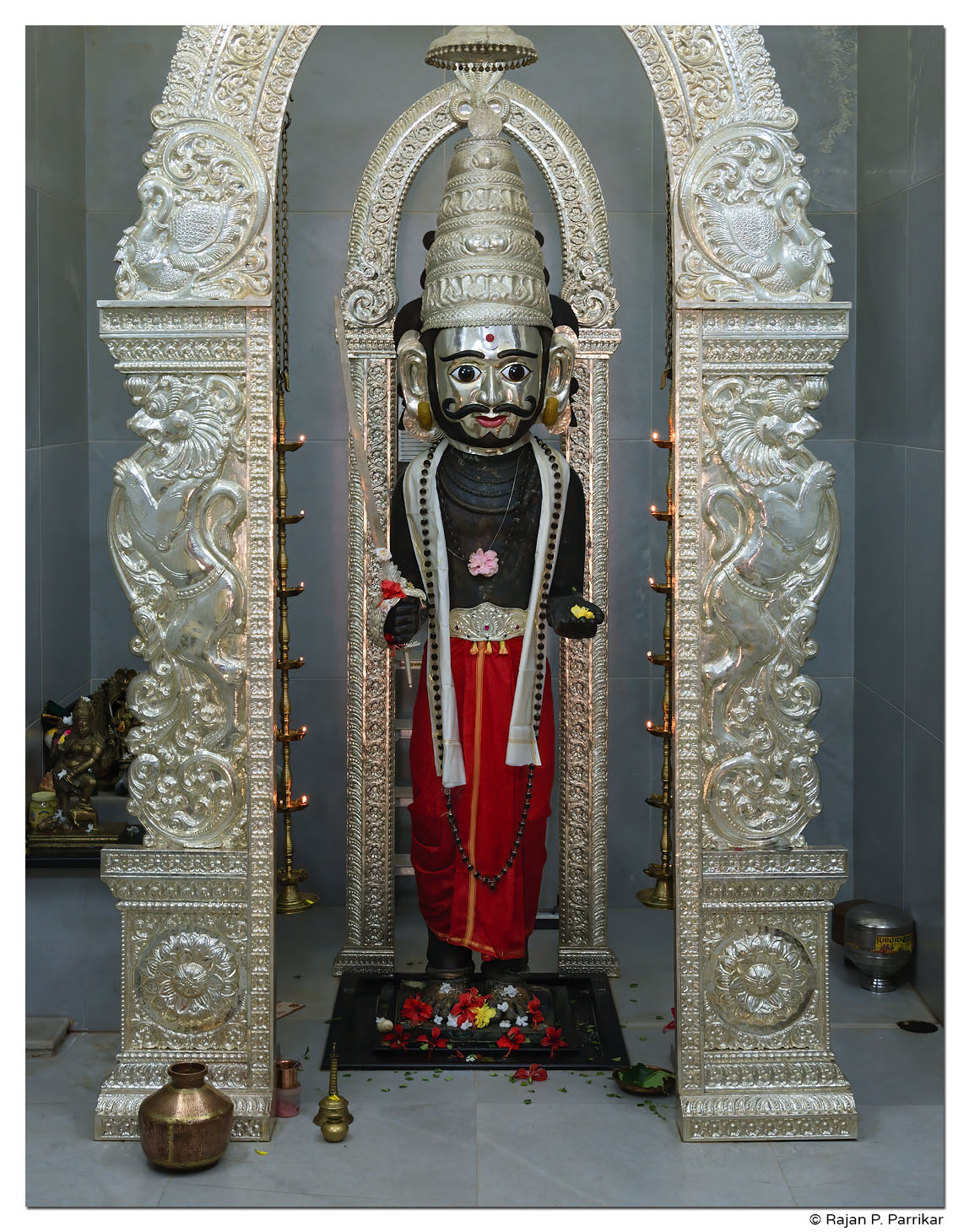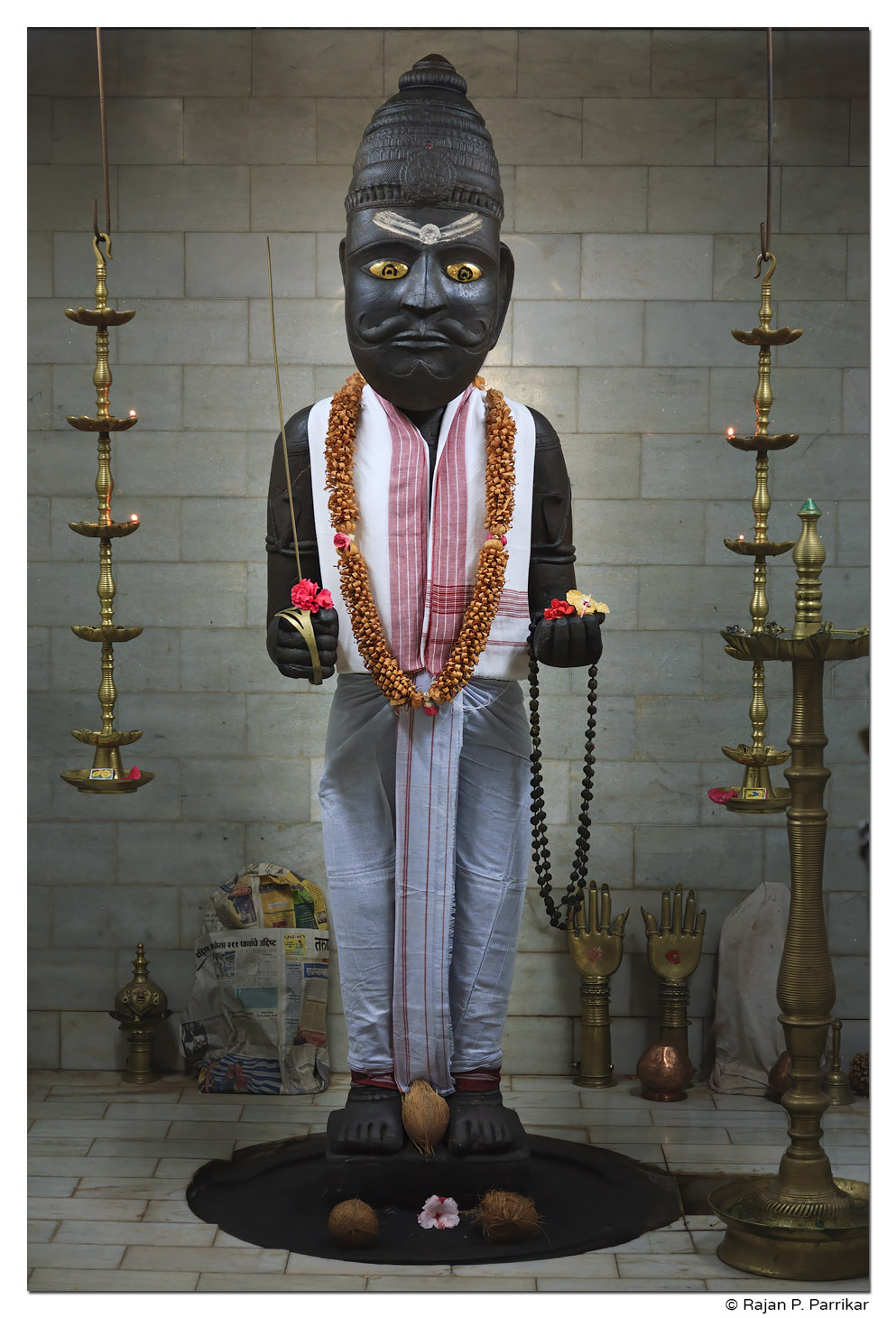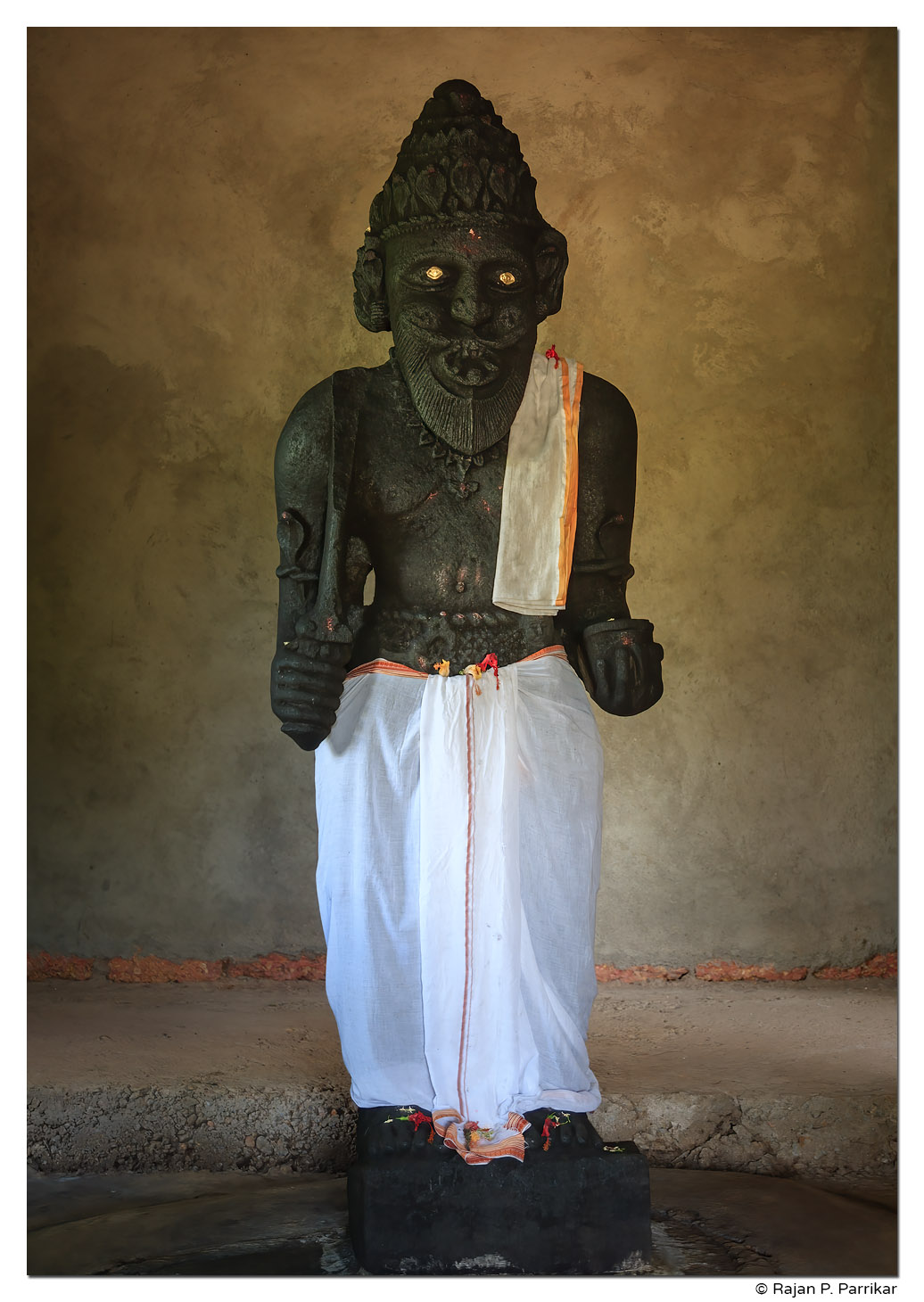Series revived.
During 2006-2008 I undertook a personal project of seeking out and photographing Vetal shrines in Goa that predated the Portuguese colonial era.
The subject interests me, in part because worship of Vetal circumscribes the socio-cultural boundaries of Goa more accurately than the state demarcation on the current map of India. For instance, the people of Sindhudurg, across Goa‘s northern border, have always been regarded as part of the Goan family.
Photography in these rural shrines was a challenge given the sub-optimal lighting conditions and cluttered backgrounds. But my intent was more documentary than aesthetic. In the intervening years since the photos were taken our software tools have vastly improved and it is a pleasure to revisit my old unpublished files.
Vetal is represented by a striking form that is unique in Hindu iconography. In villages hosting a particularly fierce visage of the idol, the American televangelist Pat Robertson would come to my mind and with it a chuckle at his rant that we Hindus are worshippers of the devil.
The ancient deity of Vetal, its iconography and associated rituals, are important elements of and unique to Goa‘s Hindu tradition. The deity was most likely worshipped by the Austric Gauda tribe, Goa‘s earliest settlers, and later embraced by the Nath Panthis between the 10th & 13th C. Eventually it came to be absorbed into the larger Hindu pantheon. A mere 50 or so out of the hundreds of ancient Vetal sites in Goa survived the iconoclasm by the Portuguese. Every single site in the Bardez and Tiswadi talukas was destroyed.
Traditionally the images of Vetal were cast out in the open with provision for a simple roof overhead. After all, as the village protector, he was expected to be out on his nightly patrol. To this day, offerings of footwear are made at his temples. Buffalo sacrifice was once common but is now far less so. Fowl and goat are still routinely offered.
For more, see the link above.
All the posts in the series are collected here.

Vetal of Moolgaon
5D, 24-105L

Vetal of Chopdem
5D, 24-105L

Vetal of Khandepar
5D, 24-105L





Beautiful shots. Such nice aesthetics. What has happened to us in the past few decades – putting up garish structures, garish colours, and gaudy embellishments.
For reasons that have never made sense, they consider it ‘development’ and they will tolerate no suggestions to arrest this. Panjim had a beautiful old temple to Mahalaxmi with an open mandap featuring rounded pillars. They tore it down and have now built a concrete prison for the goddess. I don’t know how to explain this decline.
Dear Rajan, I have my kuldevta at valing. How do I contact you…when I am there.. Bhandarkar kalyan 9920755910
Very interesting. I recently visited the Vaitala Deula (Goddess) temple in Bhubaneshwar. https://en.wikipedia.org/wiki/Baitala_Deula Is there a “gauda” connection here ? I hear the ‘gauda’ term is connected to Goa, Kashmir, and Bengal (and thereabouts like Odisha and Ahom). Is that true ?
Sugrutha: The “Gauda” referring to the Goan tribe above is different from the “Gaud/Gour” referring to the Bengal region. The Gaud Saraswat Brahmins of Goa are said to have ancient links to Bengal.
Would Betalbatim derive from the words ‘The Vetal of Batim’. If so, why only Batim gets to be named after their Vetal?
Roland-bab – Yes, Betalbatim derives from Vetal. The village was home to an important temple and the Vetal from there is now at the Goa State Museum. Likewise, the old Vetal sculpture from nearby Sarzora.